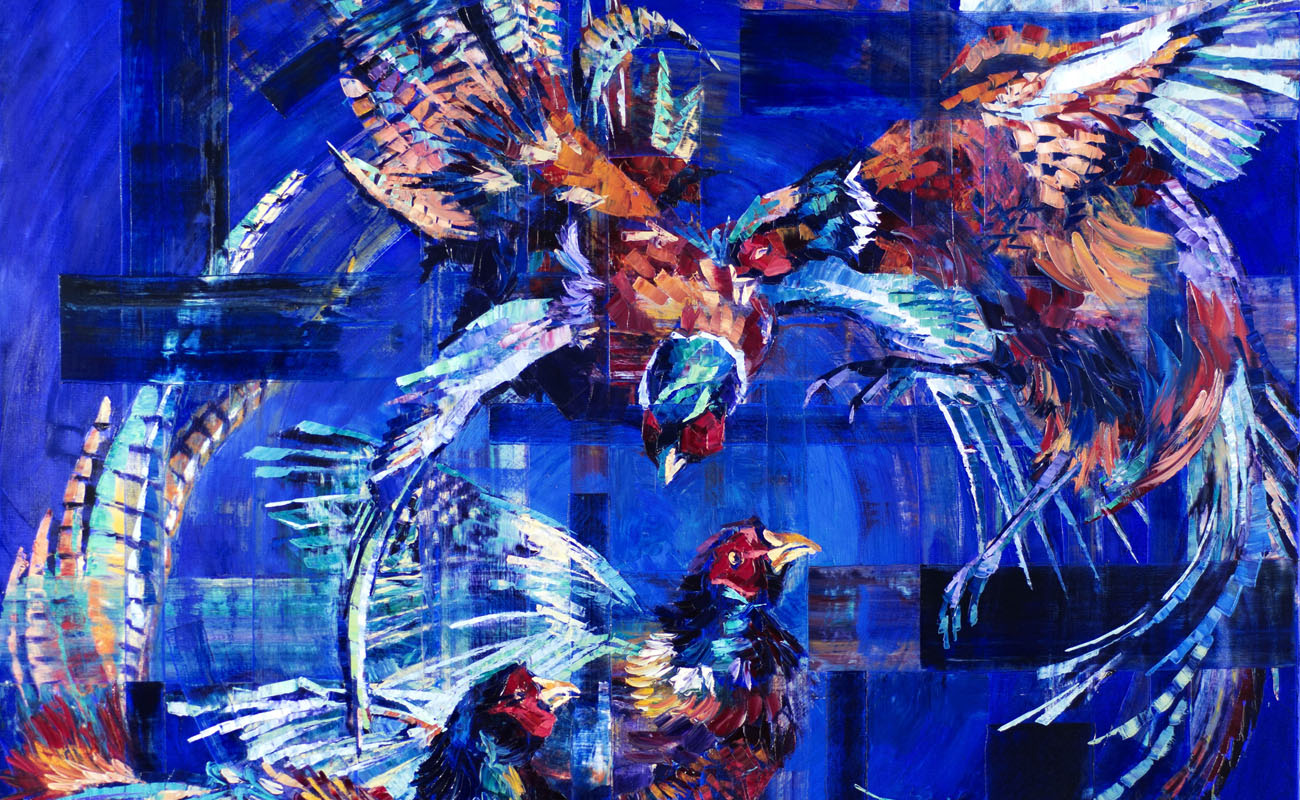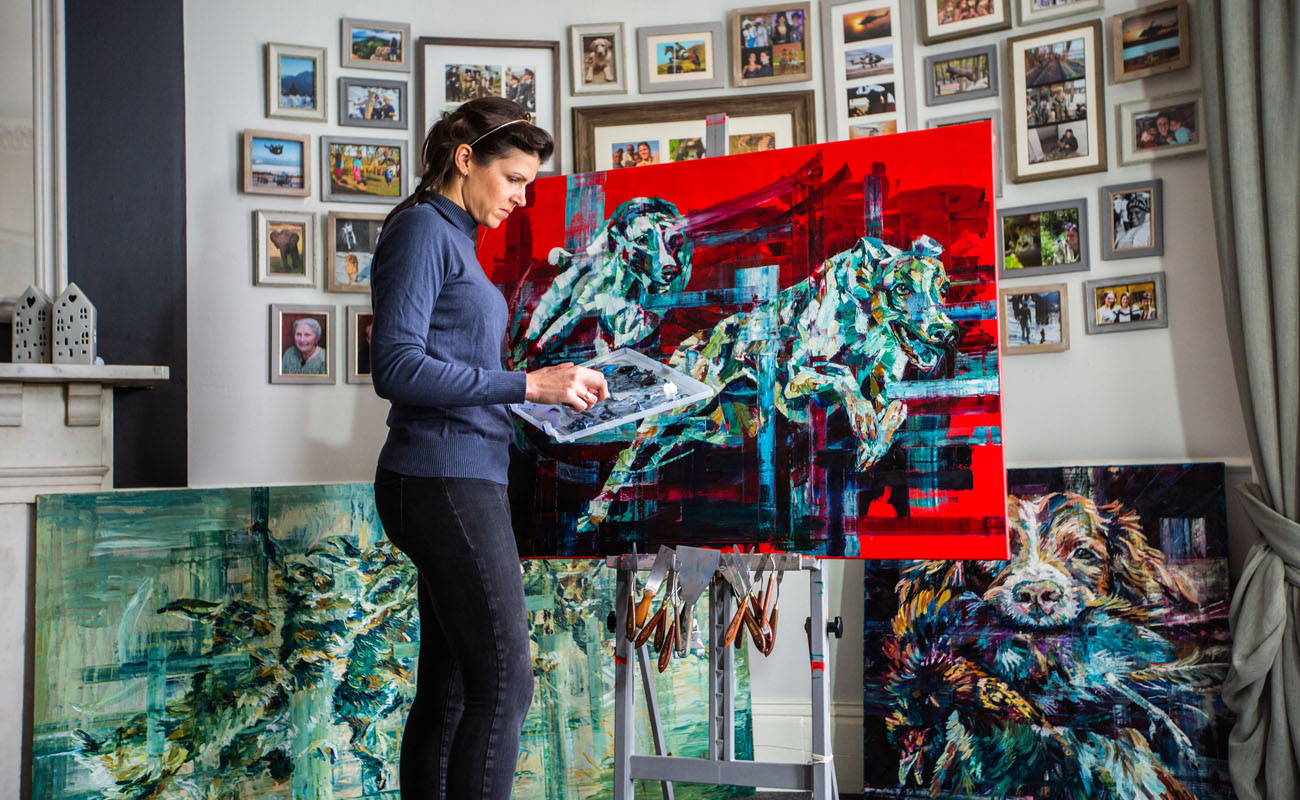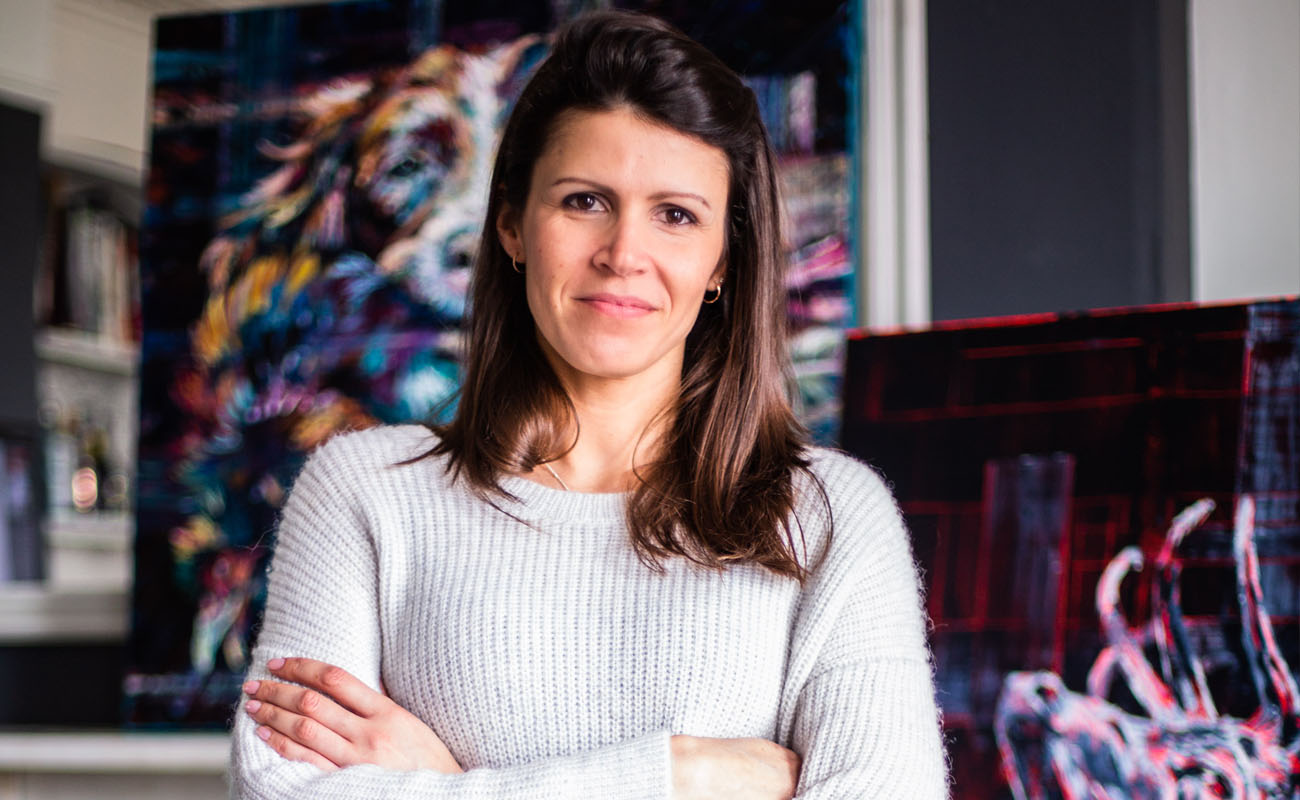This website uses cookies so that we can provide you with the best user experience possible. Cookie information is stored in your browser and performs functions such as recognising you when you return to our website and helping our team to understand which sections of the website you find most interesting and useful.
Former Army pilot Hannah Shergold on why following her creative dream was the best thing she ever did
By Rose Adams | 30 May 2018 | Culture
The artist talks to Tempus about why she left a long career in the Army to become an artist

To say that Hannah Shergold has had a colourful career would be an understatement. After studying a degree in Zoology at Cambridge University, she joined the British Army in 2009 as a helicopter pilot, serving in locations such as Germany, Canada, Kenya and Afghanistan. During her time in the armed forces, her passion for animals and raw talent for painting and drawing meant she passed time sketching the Kenyan wildlife around her, leading to several prestigious military commissions – including her leaping Lynx piece for the Army Air Corps and Charging Black Rhino for the 1st (UK) Armoured Division in Germany.
Now out of the Army enjoying a successful career as an artist, Shergold is able to combine her natural creativity and aptitude for science and wildlife full-time. In a bid to preserve exclusivity, all of Shergold’s works are one-off pieces – a selection of which will be showcased at her first ever solo exhibition at La Galleria, Pall Mall on 25 – 30 June.
At our first ever Tempus Earth Conservation Gala on Thursday 31 May, Shergold will be live painting a tiger on canvas in view of a room full of 300 celebrity and high net worth guests at The Dorchester London. Once completed, the piece will be auctioned to raise money for WWF, the worthy cause the gala is in aid of. Ahead of the event, we spoke exclusively to Shergold as she shared the secrets behind her creative success, and what she has in-store for us at the gala.
What is it about animals and wildlife that inspired you to make them the focal point of your work?
I’ve always been passionate about animals, so much so that I ended up in Cambridge Vet School. Animal behaviour fascinates me and this is what I always try to capture in my work.

You've enjoyed an extremely varied career from animal sculptor to military pilot. What was it that made you want to make that unique switch?
I have to confess that my initial move from sculptor to the Armed Forces was slightly out of my control. I needed to make the most of the fact that I was still young, had a great degree, and the world was my oyster. Sandhurst seemed like a great opportunity – although I was naive to the extremity of what was in store during the basic training! Coming out of the Army after 9 years service has been purely to pursue my passion for art again. Though my Service Days as a helicopter pilot have been the most incredible experience, art is in my blood, so it was only natural I pursed this.
Has your time in the military inspired your work in any way? If so, how?
Much as the subject matter for my work has now moved away from Army themes, it was my deployment to Kenya that got me back into drawing. I spent a lot of time on standby duty to fly helicopter medical evacuations so there was plenty of time to kill. Some would read books or play video games, but I paint.I started drawing my military surroundings – the camp, the soldiers, the vehicles and aircraft – but moved from pen and ink to watercolour which lent itself more to the natural world and I started to paint more and more wildlife.
Is there any other subject matter that you love to paint?
Now that I’ve carved out a unique style, I love to use it to paint human portraits, especially older ones. I’ve been turning down all commissions in the past year but I already know that I plan to take on some portraiture.
You will be live painting at our Tempus Earth Conservation Gala this Thursday, can you tell us exactly what you be painting? What is the inspiration behind this?
I will be painting a tiger on the night as I believe it’s one of the most iconic and majestic animals that still sits on the endangered list. It’s important that the painting appeals to plenty of potential bidders and I hope it will really turn some heads.

Have you ever done anything like that before?
The only painting I’ve ever done under timed pressure has been for Sky Arts Portrait Artist of the Year where I was lucky enough to be selected as the Wild Card for the 2019 competition.
How do feel about the 'live' element in front of a large audience? Nervous? Excited?
My military background as an Officer and pilot has meant I have regularly had to stand up and deliver briefings to large audiences, so this doesn’t make me nervous. I am, however, slightly apprehensive about the amount of work I’ve got to do in the short time frame. I’m excited to meet some of my real heroes in the conservation world and I really encourage anybody to come along and chat, as long as you don’t mind that I carry on working of course!
Proceeds from the sale of your work will be going towards the WWF, do you feel more should be done to help animal conservation?
I think it’s becoming ever clearer that even though so much effort is being put into conservation, the declining animal numbers tell the real story. I’ve seen first-hand in Kenya the effects of poaching, but we really need to address the reasons behind the slaughter – it’s not always money that is the driver. I was privileged to be able to visit Rwanda in 2016 and see the mountain gorillas in the volcanoes national park which was a lesson in addressing some of the other underlying cause putting measures in place to ensure wildlife and humans could coexist and even benefit from each other. It was truly inspiring.
What can we expect from your solo exhibition at La Galleria in June?
I am releasing 14 new works entitled The Field Collection which aim to celebrate British wildlife and country pursuits. The canvases are an explosion of movement and colour. I like to use very bold strokes with palette knives and then scrape off the paint in vertical and horizontal lines to achieve a geometric element – this adds depth to the work in a series of layers that viewers can look through.







